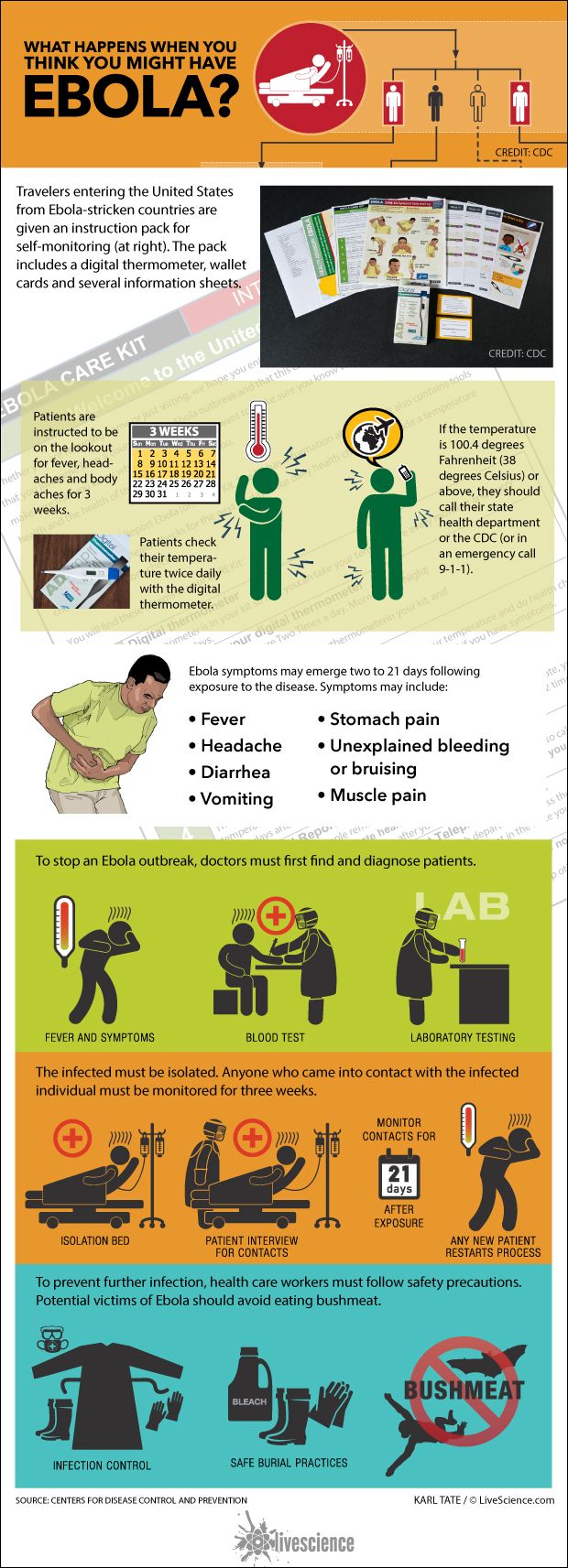Explained: What to Do if You Get Ebola (Infographic)

Travelers entering the United States from Ebola-stricken countries are given an instruction pack for self-monitoring (at right). The pack includes a digital thermometer, wallet cards and several information sheets.
Patients are instructed to be on the lookout for fever, headaches and body aches for 3 weeks. Patients check their temperature twice daily with the digital thermometer. If the temperature is 100.4 degrees Fahrenheit (38 degrees Celsius) or above, they should call their state health department or the CDC (or in an emergency call 9-1-1).
Ebola symptoms may emerge two to 21 days following exposure to the disease. Symptoms may include:
• Fever
• Headache
• Diarrhea
• Vomiting
• Stomach pain
• Unexplained bleeding
or bruising
• Muscle pain
To stop an Ebola outbreak, doctors must first find and diagnose patients. The infected must be isolated. Anyone who came into contact with the infected individual must be monitored for three weeks. To prevent further infection, health care workers must follow safety precautions. Potential victims of Ebola should avoid eating bushmeat.
Sign up for the Live Science daily newsletter now
Get the world’s most fascinating discoveries delivered straight to your inbox.



